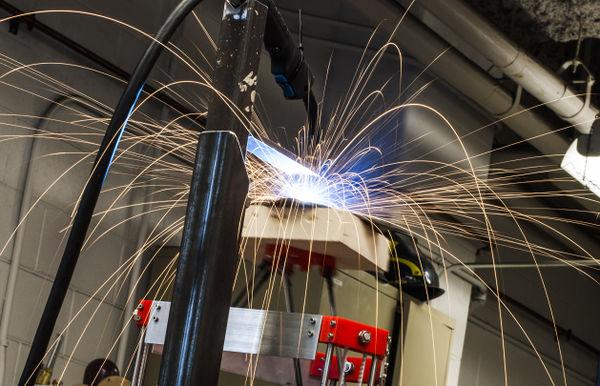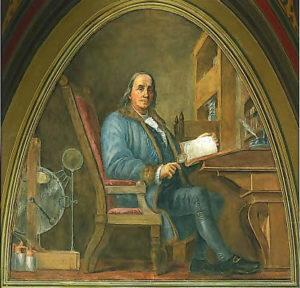 Ever since it was established in 2012, America Makes, or the National Additive Manufacturing Innovation Institute, has stated that their goal was to work with the business and higher education community to develop next-level 3D printing technology. As the United States’ official 3D printing and additive manufacturing accelerator they have brought together more than 160 businesses and colleges and enabled them to collaboratively develop improvements to 3D printing technology, software, materials and processes. They have produced groundbreaking technology that has led to more metal 3D printing in aerospace applications, medical applications, electronics 3D printing and even support structure optimization algorithms. Each year membership in the organization grows, and new and more exciting developments that benefit all of the United States are made.
Ever since it was established in 2012, America Makes, or the National Additive Manufacturing Innovation Institute, has stated that their goal was to work with the business and higher education community to develop next-level 3D printing technology. As the United States’ official 3D printing and additive manufacturing accelerator they have brought together more than 160 businesses and colleges and enabled them to collaboratively develop improvements to 3D printing technology, software, materials and processes. They have produced groundbreaking technology that has led to more metal 3D printing in aerospace applications, medical applications, electronics 3D printing and even support structure optimization algorithms. Each year membership in the organization grows, and new and more exciting developments that benefit all of the United States are made.
 This year, the Michigan Technological University teamed up with America Makes to develop a new open-source, web-based 3D controller. The free software is called Franklin, and the firmware was written by Bas Wijnen, a Michigan Tech PhD candidate who created it as part of his America Makes project to develop inexpensive 3D metal printers. Wijnen and his project have already demonstrated their ability to produce a metal 3D printer that costs less than $1200. Franklin has already displayed the ability to manage and recover from lost communication issues that Wijnen experienced while developing his 3D printer, which was made from low-cost steel and aluminum welders.
This year, the Michigan Technological University teamed up with America Makes to develop a new open-source, web-based 3D controller. The free software is called Franklin, and the firmware was written by Bas Wijnen, a Michigan Tech PhD candidate who created it as part of his America Makes project to develop inexpensive 3D metal printers. Wijnen and his project have already demonstrated their ability to produce a metal 3D printer that costs less than $1200. Franklin has already displayed the ability to manage and recover from lost communication issues that Wijnen experienced while developing his 3D printer, which was made from low-cost steel and aluminum welders.
“This open-source software, Franklin, enables a user to control their 3D printer or any other 3D device from any web connected device – a cell phone, tablet, or laptop from anywhere in the world,” explained Michigan Tech professor Joshua Pearce, who is part of both the Department of Materials Science & Engineering and the Department of Electrical & Computer Engineering.
Not only is Franklin completely open source, but so are the metal 3D printers developed by the Michigan Tech and America Makes team. The CAD files, schematics, bills of materials and PCB layouts have all been released to the public, who are encouraged to download them and build their own technology around them. The Michigan Tech team described the technology and software in a new study that they just submitted to the Journal of Open Research Software.
“Franklin was developed as a software platform. It is scriptable – it is not a single-use piece of software. It can easily be integrated into anyone else’s projects. It makes your computer a general purpose machine that can help you make anything you can think of,“ Wijnen explained.
The Franklin 3D software package takes its name from Benjamin Franklin, who is one of the United States’ founding fathers and a prolific inventor and scientist. His inventions would go on to be the basis of many of the technologies that led to advanced computing, manufacturing and programming. Franklin made sure that all of his inventions and discoveries were available to anyone who wanted to use, improve or continue to develop them. In his autobiography, Franklin explained why he would always refuse patents on his inventions, including a safer and more efficient design for a stove. He famously said “That, as we enjoy great advantages from the inventions of others, we should be glad of an opportunity to serve others by any invention of ours; and this we should do freely and generously.” That is, of course, the philosophy of the entire open source movement.
“As this is open source anyone in the world is welcome to build off of it to improve their own applications. For example, we have used it for plastic 3D printing on Cartesian and delta machines, laser welding, PCB micromilling, digital microscopy, vinyl cutting, plotting, food printing, embroidery and of course weld-based metal 3D printing,” continue Pearce.
While America Makes is not without its flaws or drawbacks, any time any advanced technology is made to be open source it benefits the entire technology community. The metal 3D printer plans developed by the Michigan Tech team are available from Appropedia for download here. The Franklin 3D printing control software package is available for download from Github. And here is the team’s research paper describing how the software works on Open Research Software. Discuss further in the 3D Controller forum over at 3DPB.com.
Subscribe to Our Email Newsletter
Stay up-to-date on all the latest news from the 3D printing industry and receive information and offers from third party vendors.
Print Services
Upload your 3D Models and get them printed quickly and efficiently.
You May Also Like
Consolidation in AM: How 2025 Is Shaping the Industry’s New Normal
The first half of 2025 has been marked by a clear shift in the additive manufacturing (AM) industry. Companies are no longer just focused on developing new tech by themselves....
Etsy Design Rule Change Reduces Selection of 3D Printed Goods
Online marketplace Etsy has implemented a rule change requiring all 3D printed goods on the site to be original designs. The update to the site’s Creativity Standards states, ¨Items produced using...
U.S. Congress Calls Out 3D Printing in Proposal for Commercial Reserve Manufacturing Network
Last week, the U.S. House of Representatives’ Appropriations Committee moved the FY 2026 defense bill forward to the House floor. Included in the legislation is a $131 million proposal for...
Transforming From Tourist to Native: Duro CEO Michael Corr Explains Why the Company Rebuilt its PLM Software on AI
In these early innings of the AI boom, many market analysts have expressed concern that AI spend has gotten too far ahead of the technology’s proven ability to deliver significant...


































